Canon EF 24-105 mm f/4L IS II USM
4. Image resolution
Let’s check how the tested instrument compares – its performance in the frame centre at 24, 40, 70 and 105 mm presents a graph below.
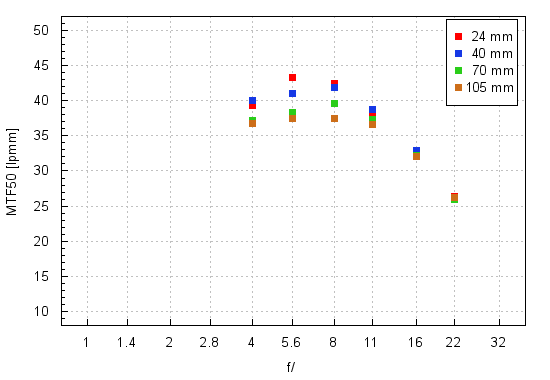
Please Support UsIf you enjoy our reviews and articles, and you want us to continue our work please, support our website by donating through PayPal. The funds are going to be used for paying our editorial team, renting servers, and equipping our testing studio; only that way we will be able to continue providing you interesting content for free. |
- - - - - - - - - - - - - - - - - - - - - - - - - - - - - - - - - - - - - - - - - - - - - - - -
The results are very good – you can notice that at first glance. Already at the maximum relative aperture, no matter the focal length used, MTFs are higher than 36 lpmm and it means the images are of good quality. On slight stopping down the resolution values get near 40 lpmm, reaching over 43 lpmm at most. On the one hand these results are significantly better than those of the cheap CanonáEF 24–105ámm f/3.5–5.6 ISáSTM but if you stack them up against the performance of its predecessor they haven’t improved. The rivals such as the Sigma A 24-105 mm f/4 DG OS HSM can even fare a tad better.
Perhaps on the edge of the frame the new Canon 24-105 mm will perform better than its rivals and the older version? Let’s check how it fares near the end of the APS-C sensor.
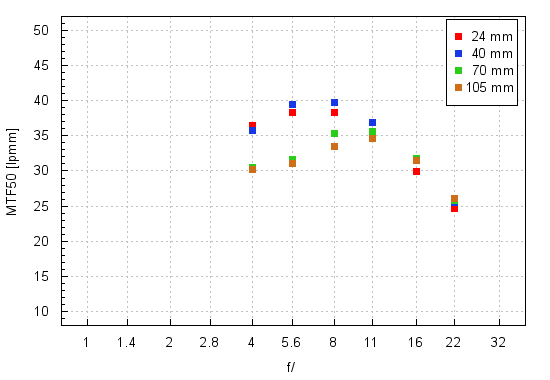
No reasons to complain here – shorter focal lengths are simply excellent but even the weaker 70-105 mm range doesn’t have any problems with delivering fully useful results at the maximum relative aperture. Compared to the results of the predecessor it is a significant improvement as, in the 70-105 mm range, the older lens needed to be stopped down to f/5.6 in order to produce acceptable photos. In a duel with the Sigma 24-105 mm OS we can announce a draw. The Canon fares better at the shortest end of the range of focal lenghts and the Sigma prevails when it comes to longer focal lengths. What’s interesting, the cheaper Canon EF 24-105 mm f/3.5-5.6 IS STM is hardly fighting a losing battle in this area, especially if you look at its performance at the longer end of the range of focal lengths.
Let’s glance at the performance of the tested lens on the edge of full frame – an appropriate graph you can find below.
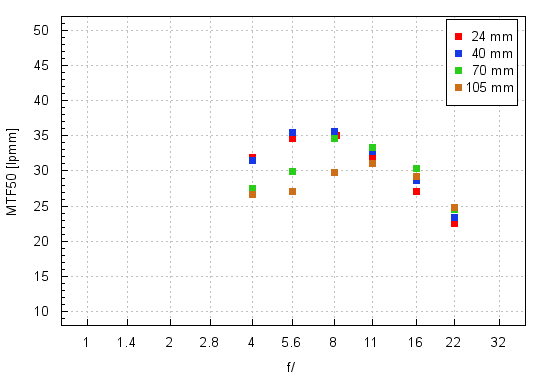
In the 24-40 mm range of focal lengths you can talk about good results. Even at the maximum relative aperture the lens doesn’t have practically any problems. At the 70 mm focal length you have to stop it down to f/5.6 in order to ensure an acceptable image quality. The 105 mm focal length is even weaker because the lens has to be stopped down to near f/8.0. Our conclusions? Even if that performance makes us hardly impressed it should be said the rivals don’t offer anything more. Both the cheaper Canon 24–105ámm STM and theáSigma 24–105ámm OS can compete with the new Canon successfully only in the 40-45 mm range of focal lengths; the rest of their focal lengths spectrum fares definitely weaker.
To sum up the guidelines of Canon concerning their new lens construction seem to be clear: they accepted a slight worsening of the image quality in the frame centre (compared to the results of its predecessor) but instead they offered a much better performance on the edge, especially distinct in the 24-40 mm range, where the sharpness is very good even near the rim of the full frame sensor. It is an important piece of news; such a universal lens is often a part of your trip equipment and you want to capture both landscapes and architectures with it. A good image quality across the whole frame is a very sought-after quality.
At the end of this chapter, traditionally, we present crops taken from photos of our resolution testing chart, saved in JPEG format.
| Canon 5D MkIII, JPEG, 24 mm, f/5.6 |
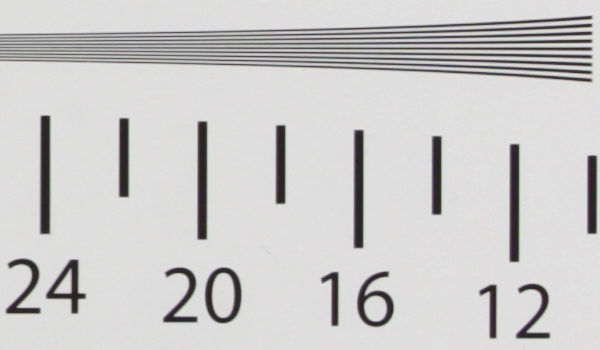 |
| Canon 5D MkIII, JPEG, 105 mm, f/4.0 |
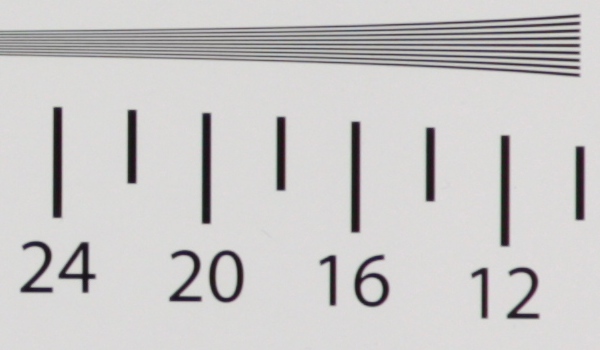 |






